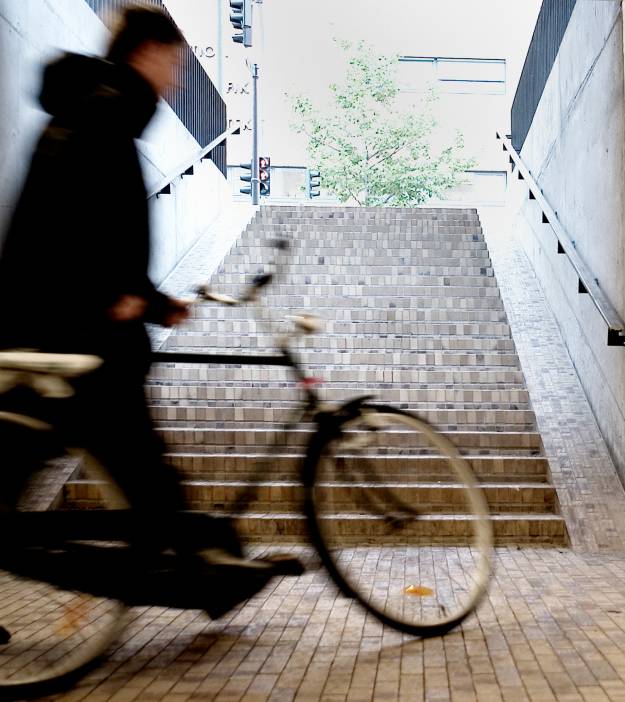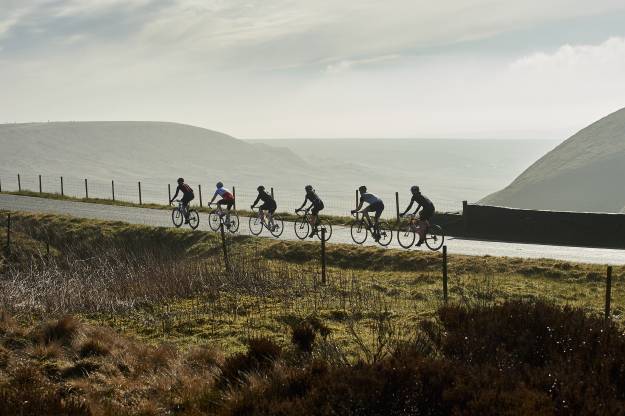Changes to the Highway Code have provoked plenty more discussion this week. Here, our Policy Manager Nick Chamberlin reflects on the changes for people on bikes riding ‘two abreast’.
After much speculation in the media (lots of it sadly inaccurate and unnecessarily inflammatory), the revised Highway Code will finally come into force on Saturday 29 January. This is the first time that the public will get to see all of the changes that were consulted on, and over the next few weeks I will pull out one or two key changes at a time and share my thoughts on what this means for behaviours on our roads.
As I touched on last week, the changes wont miraculously change behaviour on our roads overnight. Rather, they are the basis for changes to the way drivers are taught, how our roads are policed and how the courts deal with road crime. There is a lot of work to do and we are under no illusions about the challenges that lie ahead but nonetheless this is still a moment of significant importance.
Rule 66
Rule 66 is of specific interest to many British Cycling members and road cycling clubs, with the evening and weekend club ride dependent on other road users understanding that a compact group of people cycling side-by-side is legal, enjoyable and in many instances the safest and most expedient way for a group to ride and for people driving to safely overtake.
As well as being fundamental to the sport and pastime of social and performance road cycling, riding side-by-side is also naturally protective when cycling with children or those less confident.
Rule 66 is a series of advisory statements. As such, this has made many of the statements within it open to interpretation and therefore a source of disagreement. But this flexibility (‘you should’ rather than ‘you must’) is important as many of the rules of the road depend on context and cycling two abreast is an example of a situation where insistence on ‘you must’ would not work. The bullet point that has caused so much conflict for many years read:
- never ride more than two abreast, and ride in single file on narrow or busy roads and when riding round bends
It has been clear for many years that this statement was not fit for purpose. Never ride more than two abreast doesn’t implicitly say that two abreast is legal and responsible and it doesn’t in many eyes extend to a group of people cycling together, such as on a club ride.
When the consultation was launched, this is the wording that the officials at the Department for Transport included:
- ride in single file when drivers wish to overtake and it is safe to let them do so. When riding in larger groups on narrow lanes, it is sometimes safer to ride two abreast
We felt that this was a significant way short of what would be needed for a substantial change in acceptance and protection for two abreast and group cycling. Firstly, there was the dangerous expectation of the need to single out for a driver to overtake and the use of the words ‘when drivers’ which put the driver in charge of the situation, not the people cycling.
We listened to all of the individual and club feedback that so many people sent us and we worked closely with the policy and campaigns teams at Cycling UK, with further support from Dame Sarah Storey and Chris Boardman, to try to develop wording that we felt would work for people cycling and be supported by a broad range of other stakeholders, not least the big motoring organisations. This is what we suggested:
- “You should be considerate of the needs of other road users when riding in small or large groups. You can ride two abreast and it is often safer to do so, particularly in larger groups or when accompanying children or less experienced riders. Be aware of drivers behind you, allowing them to overtake (e.g. by moving into single file) when you feel it is safe to let them do so.”

Rules 154 and 213
Critically our response to the consultation asked for supporting changes to driver-facing rules 154 (rural roads) and 213 (dealing with uneven road surfaces and other hazards), without which we felt that any change to Rule 66 would be negligible in its impact. Our suggestions were:
- Rule 154 – “When meeting groups of cyclists riding two abreast, they may choose to move to single file if they deem it safer to do so. They are under no compulsion to do so and it can be safer and easier for you to overtake a compact group, when conditions allow, rather than a longer line of cycles.”
- Rule 213 – “Cyclists are advised to ride at least a door’s width or 0.5m from parked cars, for their own safety. Whenever they feel it is safer to do so, for example, on narrow sections of road, at junctions and in slower-moving traffic, cyclists are also advised to ride in the centre of the lane (rather than towards the side of the road), while groups are advised to cycle two abreast in these and other situations. Allow them to do so for their own safety, as this helps them ensure they can see, be seen, and avoid being overtaken where this could be dangerous.”
We felt that this package of changes gave the greatest protection to the right to cycle two abreast and appropriately emphasised why it is a natural and safe way for two or more people to cycle together on the road.
So what did we end up with?
- Rule 66: Be considerate of the needs of other road users when riding in groups. You can ride two abreast and it can be safer to do so, particularly in larger groups or when accompanying children or less experienced riders. Be aware of drivers behind you, and allow them to overtake (e.g. by moving into single file or stopping) when you feel it is safe to let them do so.
- Rule 213: On narrow sections of road, on quiet roads or streets, at road junctions and in slower-moving traffic, cyclists may sometimes ride in the centre of the lane, rather than towards the side of the road. It can be safer for groups of cyclists to ride two abreast in these situations. Allow them to do so for their own safety, to ensure they can see and be seen. Cyclists are also advised to ride at least a door’s width or 1.0m from parked cars for their own safety.
On balance we have gained a great deal and the wording of rules 66 and 213 and much of what we suggested has been adopted. There are however some disappointing aspects.
The addition of the word ‘stopping’ in Rule 66 once again opens the door to arguments on the road and the perceived ‘right’ of a driver to overtake even when there is no basis for doing so. We feel that there is no need for the addition of this word as the first sentence of the new rule (“You should be considerate of the needs of other road users when riding in small or large groups”) clearly states the importance of consideration for others. Stopping may be an option on rare occasions but in most instances a safe overtake of a compact group can be accomplished once the right conditions present themselves.
The omission of this aspect of our suggestion for Rule 213 – “….and avoid being overtaken where this could be dangerous” – is a significant omission in our view and is a missed opportunity to state clearly that enabling a safe overtaking manoeuvre by a driver should be a mutually agreed decision on the road by the people cycling and the person driving.
The missed opportunity to change the wording of Rule 154 relating to rural roads is another disappointment in our view and fails to address the aggression and misunderstanding that many clubs and social groups experience on rural roads every weekend.
So where does this leave us
The changes are better than what we have had to work with to date, and the rules ensure much greater clarity for people learning to drive. They are also more robust for use in our courts and by police out on the road.
What the revisions don’t do is end once and for all the debate around the appropriateness of cycling two abreast and that is a real shame and a great disappointment, following the work that has been done on the issue over a number of years.
There are still grey areas around cycling tricycles and other adaptive cycles side-by-side, for instance, and while it is hard to succinctly use the Highway Code for some of these distinctions, if they are not highlighted then the users of those cycles remain unrepresented and their safe use of the road open to abuse.
We feel there is a need to continue to push for the exact changes that we sought, particularly on Rule 66, and we will continue to work on behalf of our members with colleagues at the Department for Transport to ensure that the point is made loud and clear.
We also continue to support the DfT on the public awareness campaign which follows the introduction of the new code, which will be absolutely vital in communicating these changed to a widespread audience and educating drivers on the needs of vulnerable road users in the process.













